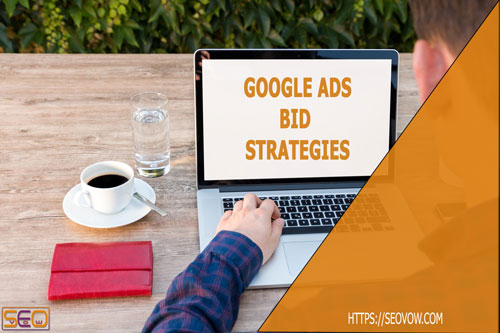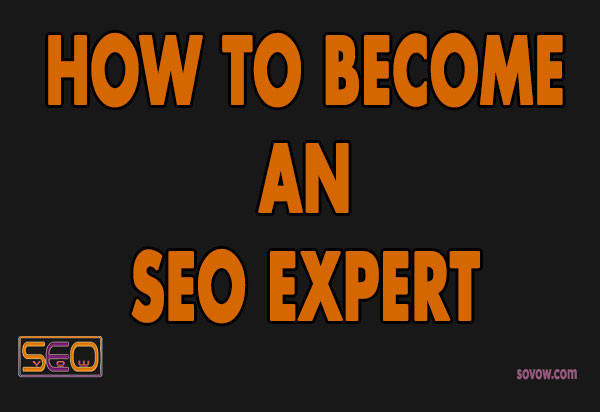Whenever you are a new or experienced Google advertiser, you will always face different bid strategies. Some will be easy and others will seem to be finicky.
Below are 14 Google Ads bidding strategies you will always need during your search, display, and video marketing campaigns.
- Maximize clicks
- Maximize Conversions
- Maximize Conversion Value
- Enhanced Cost-per-click (ECPC)
- Manual CPC (Cost-per-click)
- Target CPA (Cost-per-click)
- Target ROAS (Return-on-ad-spend)
- Target outranking share
- Target search location
- Target impression share
- CPM (Cost-per-mille)
- vCPM (Viewable-cost-per-mille)
- CPV (Cost-per-view)
- Automated bid strategies
- Maximize clicks
- Maximize Conversion value
- Enhanced cost-per-click (ECPC)
- Target Return-ad-spend ROAS

I would like to elaborate on the ways these Google bidding strategies improve your search and display campaigns. Therefore you will learn the best strategy that is suitable for your online marketing campaigns depending on your business goals.
Maximize clicks bid
Maximize clicks bid is Google Ads PPC strategy that emphasizes on increasing the number of clicks over your website and web pages. This bidding method is automatically set by default during the Google search Ads network campaigns.
Note
- You can set maximum CPC (cost-per-click) bid limit that you want to spend on your keywords.
- Google Ads for maximize clicks use an average daily budget
- Daily spend may exceed your target spend at times depending on the remaining budget and fluctuations in click costs.
Maximize Conversions bid
Maximize conversions bid strategy is a Google Ads spending technique that focuses on increasing conversions from your landing page. With this strategy you spend your budget according to the number of conversions you get.
Note- Keep your eyes on your daily budget because Maximize conversions bidding will try to use all your budget.
- If this bidding strategy is not improving your ROI (Return on Investment) better switch to Target CPA or ROAS instead of spending all your daily budget without sufficient amount of conversions
Maximize conversion value bid
Maximize conversion value gets you more conversion value while spending your budget. During conversions not all conversions have the same value, so some conversions worth more to your business others not so much. Thus this helps to set the value to the conversions so that you can be able to know the value of each conversion and how different conversions are benefiting your marketing.
Note
- Using conversion value bid gets better insights into your marketing campaigns
- It is the best way especially for eCommerce to understand how every product sold relates to your advertising budget.
Enhanced CPC (ECPC) bid
Enhanced CPC or ECPC is a Google bid strategy that helps you to maximize your conversions and your conversion value by setting manually maximum CPC (Cost-per-click) for clicks. ECPC bid strategy earns you more sales and conversions by raising or lowing your bid set when a conversion is likely to happen.So Enhanced CPC differs from Target CPA and Target ROAS bid strategy as it keeps your average CPC below max. CPC you set even though ECPC may raise your CPC for a short period when a conversion is likely to happen.
You have to set tracking conversion value so that you can use ECPC for search network but Display Ads network does not require to set a conversion value.
How ECPC works
If campaign locations are likely to bring more sales or conversions, Google will raise your max. CPC depending on whether you will get conversions or a higher conversion value especially on a product such as a shopping cart price on eCommerce for instance.Two Advantages of Enhanced CPC
- Optimizing conversions: ECPC will raise your max. CPC when your conversions are likely to happen and lower it when a lead is not likely to happen
- Optimizing conversion value: ECPC will raise your max. when a higher conversion value is likely and lowers it when a low conversion value is likely to happen
Enhanced CPC bid adjustment
ECPC automatically will set a bid adjustment for you. You do not have to set a bid adjustment for example for mobile device bids. But if you want to advertise aggressively you can set bid adjustments even though it is not much recommended.Note
- ECPC is for search and display network and it cannot be used for App installs network Ads
- Keep your past 30-day CPC if you want to keep the same manual CPC
- It keeps your average CPC the same
- You have to set manually max. CPC unlikely Target CPA and ROAS that automate fully your bids
- It is the perfect match and recommended for Shopping Ads and Hotels Ads
- You must set tracking conversion for Google search network campaigns
- Always check and count your conversions to know whether is performing the way you expected
Other smart bidding gives you the option of optimizing your results but ECPC gives you manual control which many Google advertisers prefer.
Manual CPC (Cost-per-click) bid
Manual CPC is the maximum amount you set manually for limiting the money you want to spend each time a user clicks on your landing page or Ads. Manual CPC differs from automatic smart bidding strategies that Google may set on your marketing campaigns.Target CPA (Cost-per-acquisition) bid
Target CPA is a bidding strategy that can be set based on historical conversions you acquired in your previous Google Ads campaigns. Target CPA bidding helps you to get as many conversions as possible. Note- Target CPA is the average amount to pay for a conversion
- You must have historical conversions to use Target CPA
- The same conversions may cost you more or less than target CPA you set
- Google Ads adjust Cost per conversion (CPC) equal to target CPA you set
- You can set a maximum bid limit if you want
- You can adjust it in percentage % for bid adjustment on devices etc.
Target ROAS (Return-on-ad-spend) bid
It is the average conversion value or revenue you will get for each money spend on Google Ads. Target ROAS bidding strategy gets you more conversion value and revenue on your Google campaigns. With Target ROAS some conversions may return higher ROAS other lower ROAS, but it will keep conversion value you equal to ROAS you set.
Example
Your goal is 5$ conversion value for each 1$ spend on your Ads. So you can set ROAS of 500% for every 1$ which means that you will get 5 times on your spend.
5$/1$*100%= 500% for every 1$
Note
- Set it high may influence conversion volume you get
- You can set it either on your campaigns or a portfolio
- Calculate the percentage value of your past conversion to get ideas on how much to spend
- You have to set a conversion value
- You must have at least 20 conversions in past 45 days or 15 conversions in 30 days
- For Apps campaigns, you need 10 conversions in 30 days
- Google automatically adds maximum CPC to optimize your conversion value
Transaction specific conversion values
A transaction-specific conversion is a value that is different each time a conversion happens. It requires a web developer to integrate a conversion value with Google –conversion-value variable within the conversions.
Example
1 conversion worth 25$ while another conversion may worth 500$
- Follow tracking transaction-specific conversion values from Google Documentations
- Learn how to track conversion specific values on your website by Google documentations
- Find your conversions values in your Google Ads reports
Target outranking share bid
Target outranking share is a portfolio bidding strategy that helps your Ads to outrank other Ads from another domain name such as your competitor’s website.
Note
- You can only target one domain name to outrank for each bidding strategy
- You can use the auction insights reports to report view which domains most frequently participate in ad auction with you.
- You can update Target outranking share once per day
- It can take 7 days to start producing the results
- You can set maximum CPC for Target outranking share
Target Search Location bid
Target Search Location is a Google search Ads portfolio bidding strategy. Thus target search location bid strategy that automates bidding across multiple campaigns to show your ad on the top of other Ads or on the top of the first page of search results.What is a portfolio bid?
Portfolio bidding is a Google bid strategy that combines all ad campaigns, ad groups, and keywords to achieve marketing goals. Automatically this bid strategy set bids for your campaigns and it will be found in your shared library. The benefit of this strategy is that it helps you to reach your Google Ads campaign goals.
Note
- You will expect your Ads to appear on the top and first page of Google search campaigns
- Your bid will automatically be updated several times in a day
- Is only available on portfolio bid
- Target search location is not always guaranteed
Target impression share bid
Target impression share is a bid strategy that finds the right place to show your Google display Ads campaigns. This bidding strategy will automatically select the right place to put your visual Ads banner.There are three target impression share placements
- Absolute top of the page
- On the top of the page
- Elsewhere on the page of Google search results
Note
- You can use percentages to adjust the placements of Target impression share
- You can set bid limit too low just for testing
- You can set for example -100% on a desktop to hide your Ads on big screens
Example
65% of the absolute top of the page will be set automatically to your CPC accordingly
CPM (Cost-per-mille) bid
Cost Per Mille also known as cost per thousand is a Google display campaign strategy that advertisers pay for their display Ads network after a thousand people have watched them.
Note
- You pay only when your Ads have been viewed
- CPM bidding is only used for display Ads
vCPM bid
vCPM bid strategy is a viewable cost per thousand impressions or cost-per-thousand-viewable impressions. This Google bid strategy is used when you want your display Ads to focus only on views instead of combining your ads with clicks or CPC.
Note
- You can set the maximum amount you want to pay for every thousand views
- Use VCPM only if you want to focus on views
- VCPM is not available on Google search network campaigns
- You cannot pay more than an advertiser’s ad who is on above of your ad
vCPM vs CPC
- You do not pay for an ad that was not viewed even if it was displayed on a web page
- Google compares how many bids set for 1000 views and CPC bid for each click to decide the one to be on top of the other during their impressions on a web page.
Cost Per View (CPV) bid
Cost per view (CPV) bid strategy is a Google Ad mostly YouTube network bid that helps advertisers to pay after a user has viewed or watched (TrueView) a defined part of a video depending on the CPV strategy set.Here is how Google CPV charges advertisers
- The amount you will pay for TrueView video Ads
- You pay for video views or interactions such as clicks on CTA, Cards, and banners
How CPV works?
- Set the highest amount you want to pay on each view on ad group of a TrueView video campaign Max. CPV so it will be applied to all your Ads group.
Example
Max 0.25 $ per CPV
- Trueview in-stream Ad charges Max. of 0.25$ on 30 seconds but if a video is shorter than 30 seconds he will pay fully 0.25 $
- TrueView video discovery ad you will pay 0.25$ when someone clicks on a video ad thumbnail or title and begins to watch your video ad
Remember: You can set lower Max. Bid for video discovery Ads instead of paying the same as in-stream Ads.
The amount you pay is called “Actual CPV” which depends on
- Quality Score
- Ad Rank
Note
- Views are counted when user watched 30 seconds of your video Ads
- Video can be shorter than 30 seconds
- CPV is all about YouTube advertising
Automated bid strategies
Automated bid strategies are Google bid strategies that you do not set any bidding amount. So using auto bidding strategies is good for new advertisers but it is not recommended for experienced advertisers because most of the case automated bid will try to drain your budget as much as possibleManual bid vs Automated bid
The manual bid strategy allows you to set and customize your bidding amount. The manual bidding allows you to control the money you want to spend on your ad campaigns, ad groups, and keywords.
Automated bid will not allow you to control the money you want to spend on ad campaigns, ad groups, and keywords. If you have Google Ads experience you are always recommended to use Manual bid as you can save a lot of money on your online marketing campaigns.
The advantages of the manual bid and automated bid strategies are that the manual bid strategy saves you money whereas automated bid strategy saves you time.
Conclusion
Each Google Ads strategy has its advantages and drawbacks so before choosing the right bid strategies first of all you have to define your digital marketing goals and timeline so that you can choose the suitable bidding strategy. You can test different bid strategies then measure the performance of each strategy then later choose the one that brings you the best results to your business.
👦COMMENTS
No comments yet





